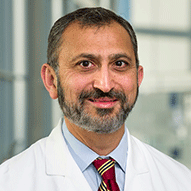Dallas
214-456-2382
Fax: 214-456-6133
Plano
469-303-4400
Fax: 469-303-4420
Referrals
Request an Appointment with codes: Cancer and Blood Disorders (CCBD)
Neuroblastoma is a type of tumor that grows in nerve cells while a baby is still in the womb. Children’s Health offers care from UT Southwestern Medical Center physicians who are among the world’s top pediatric cancer specialists. We use state-of-the-art methods for treating neuroblastoma, including a new form of radiation therapy.
214-456-2382
Fax: 214-456-6133
469-303-4400
Fax: 469-303-4420
Request an Appointment with codes: Cancer and Blood Disorders (CCBD)
Neuroblastoma tumors usually form in nerve tissue on the kidneys, abdomen, neck, chest, pelvis or spinal cord. These tumors tend to spread to other parts of the body, including bones and bone marrow.
Treatment is most effective when we detect the cancer early. Kids younger than 18 months often do very well, even when their cancer has spread.
Neuroblastoma includes several types of tumors. These types are defined by whether the tumor continues to grow or not.
This type of neuroblastoma stops growing, which means it isn’t considered cancer anymore. It becomes an extra lump of tissue that we remove through surgery.
Traditional neuroblastoma continues to grow, which means it is cancerous. We have multiple ways of treating this type, including surgery, chemotherapy and radiation therapy.
This type is like a combination of the other two. Some of the tumor cells stop growing, while some continue. We treat these the same way we treat neuroblastomas.
In most cases, doctors notice a lump or swelling in the child’s abdomen during a regular check-up. The tumor may also cause pain or interfere with other parts of the body.
Common symptoms include:
First, we take a sample of the tumor to study its cells and DNA. This tells us what kind of tumor it is and helps us plan treatment. For example, some neuroblastomas have a genetic mutation that makes the cancer more dangerous. When we see that mutation in the DNA test, we know to treat it more aggressively.
We also do tests to see whether the cancer has spread. These include a CT scan, a bone marrow sample and an MIBG scan. The MIBG scan is a special test that helps us detect neuroblastoma cells that are otherwise hard to find.
We use factors like your child’s age, the type of tumor they have, the tumor’s location and whether it has spread to decide the level of risk your child’s cancer poses.
No one is exactly sure what causes these tumors. They form while a baby is growing in the womb.
We base our treatment plan on what risk group your child falls in. Risk groups include:
If the cancer returns after treatment, we can use a new kind of radiation therapy called MIBG therapy for some children. We are also doing a study to see if this therapy is effective in the early stages of treatment.
Physicians at Children’s Health℠ are UT Southwestern Medical Center faculty members who focus specifically on pediatric tumors, and we have spent decades helping children with neuroblastoma. Our experience and teamwork mean we can act quickly to treat your child’s cancer and reduce their pain and symptoms.






























About 60% of children with neuroblastoma are cancer-free after treatment.
We have seen more children with neuroblastoma than almost any other center in the region. This means we can match your child with the treatment and approach that gives them the best chance of success.
We also do research to study and develop new, more effective treatments. Our academic affiliation with UT Southwestern Medical Center enables us to pursue new treatments and participate in clinical trials of promising new therapies. Through those trials, your child may be eligible for a breakthrough treatment they can’t access somewhere else.